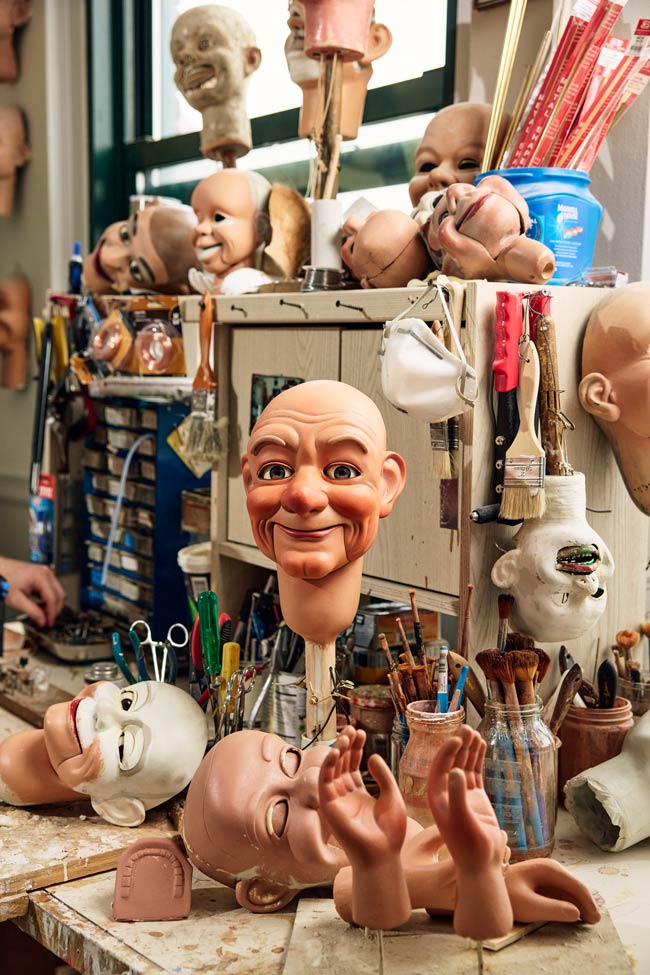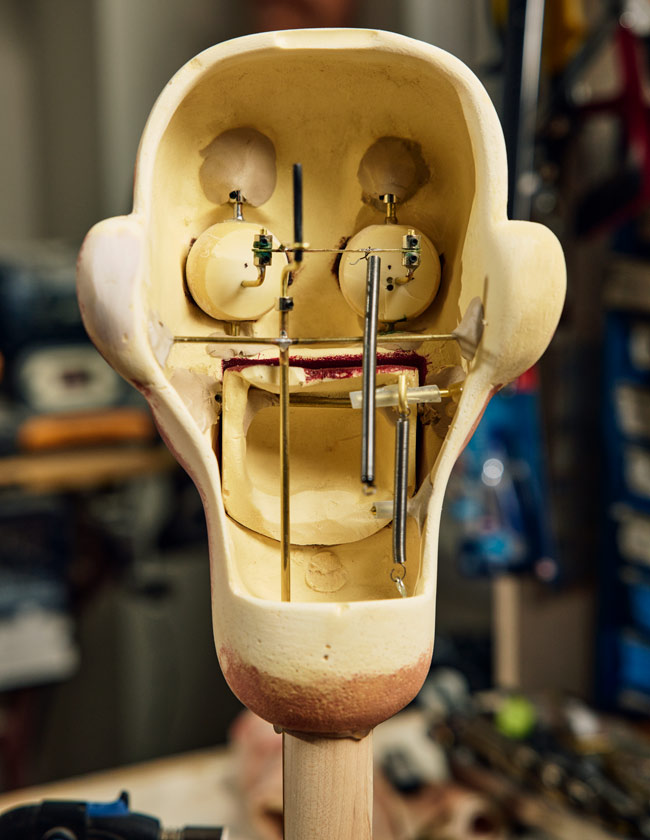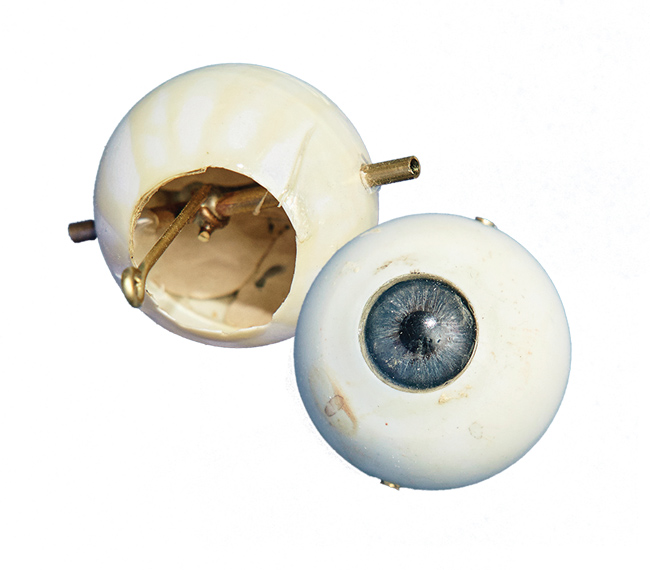By Jesse Ellison
Photos by Michael D. Wilson
From our April 2022 issue
When Austin Phillips was five years old and on a trip to the mall with his mom, he looked up and saw a ventriloquist dummy in a box on display. He wasn’t even sure what it did, but he was fixated. After he got one for Christmas, he taught himself how to throw his voice and use the string at the back of the dummy’s neck to make it come alive. By 16, he was carving his own dummies — out of necessity, since high-quality wooden puppets were expensive. Phillips stopped performing when he was 20 — on account of his laziness when it comes to practicing acts, he says — but continued making puppets, taking the craft full-time when he was 22. Now, at 28, he’s among the leading experts in the field and the youngest-known professional figure maker and restorer in the world.



The Phillips Puppets studio, on Congress Street in Portland, is crammed with custom creations in various stages of production, priceless vintage figures that collectors from all around the world send for repair, and nearly-100-year-old dummies from his personal collection. He does maybe 30 restorations a year, plus around 35 custom dummies, with the simpler models taking about a month to turn around. When it comes to repairs, Phillips’s specialty is the delicate leather moving pieces around the mouth in antique paper-mache figures from the turn of the 20th century. He says he’s the only one who does that work, since “nobody else is crazy enough to take the time to do it.”



Puppets are artwork, Austin Phillips says, but most importantly, they’re a tool for a job, and he spends endless hours perfecting their internal rigging, so they can smile, move their eyes, and wiggle their ears. “These things have a bad reputation for being something out of a horror movie,” Phillips laughs. “But these figures are crafted to be full of magic. My life has been trying to decode what that magic is and how to capture it.”
Tell Us More
Austin Phillips
How do you make each dummy?
My puppets are sculpted from urethane resin. I press or paint it into a mold, sand the surface, and sometimes re-carve the faces for variety using a chisel. Then, I do the plumbing — or the interior mechanisms — which are brass and are soldered together. For fancier custom jobs, I source hair from someone who makes hairpieces out of human hair, which is punched into a lace cap.
What are you working on now that you’re excited about?
I’ve been designing a template for a figure that I can alter with a simple paint job and wig change to match the characteristics of its owner, which I hope may be more appealing to a younger demographic. I love the tradition, and I love these old figures, but to keep this art alive, there need to be things that people can identify with within themselves when they see a dummy.
Any advice for others pursuing, say, nontraditional careers?
I think it’s so important for people who are trying to do their thing to really embrace it. It’s such a bummer to me when people want to do amazing stuff but they get shut out for it, or they have to hide it away like it’s a secret. For so long, I was a ventriloquist but I wasn’t public about it. Now, I’ve created this whole world for myself.
When weren’t you public about it?
In high school, I was more into getting girls, so I put the dummies and magic on hold. A couple years ago, I got dumped, and I’m thinking, “Okay, I gotta go back on Tinder, but I’m a full-time dummy maker.” So I’m on Instagram deleting all the dummy photos — but I have nothing else to talk about. I’d go on these dates and feel like the biggest schmuck in the world. I’d be like, “I’m a freelance artist, but I don’t have anything to say about it.” I’ve kicked that to the curb, luckily.






